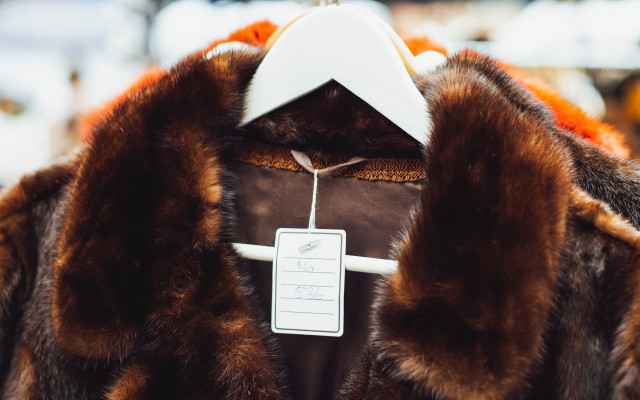Faux fur consists of synthetic fibers made to look like real fur. Why? The trend for fur trim on hats, hoods, and other apparel shows no signs of slowing. But thanks to decades of campaigns against real fur, manufacturers are increasingly relying on faux fur – or so they say. We’ll show you how to find out the truth about faux fur.
It’s kind of a paradox – selling real animal fur, but labeling it as fake! The manufacturers’ motivation is clear. Real fur has become increasingly unpopular, with fewer and fewer consumers willing to use their own bodies as billboards for the famously cruel fur trade.
What is faux fur, then? Faux fur is made of synthetic fibers designed to mimic the look and feel of real fur. It’s a response to the demand for cruelty-free fur.
However, another way of satisfying the demand for fake fur is much more cynical – but alarmingly widespread. For years now, all over the world, clothing retailers have repeatedly been caught selling real fur as fake fur. So your faux fur might actually be real fur after all.
How to Tell Faux Fur from Real Fur
-
Check the Roots
If you separate the hairs into a kind of parting, you should be able to see the fabric’s base layer. Faux fur is woven or stitched into a textile mesh, whereas real fur is, naturally enough, based on leather. -
Feel the Breeze
Blow onto the hair gently. Fake fur is usually pretty stiff and immobile. Real fur will respond to the slightest breeze. In addition, fake fur hairs are usually the same length, while real fur consists of both longer, tapered hairs and shorter, finer hairs. -
Pin it Down
Caution is advisable with this test if you don’t already own the product. However, if you can’t tell whether the base fabric is synthetic just by looking (manufacturers will even dye leather so it looks less like skin), you can try pushing a pin into it. Leather will be hard to pierce, whereas faux fur will give easily. -
Light it Up
Of course, you should only try this with things you’ve already paid for! Pluck some hairs from the fur and (carefully!) set them on fire. Faux fur smells like burnt plastic and melts into little balls. Real fur, on the other hand, smells like burnt hair.
Why Do Manufacturers Lie about Faux Fur?

Why would retailers even use real fur if consumers prefer faux fur? The answer is a saddening but predictable truth – because it’s cheaper. The animals are farmed and slaughtered so carelessly that their real fur ends up being cheaper to produce than synthetic fur. For example, in China raccoon dogs are killed solely for their fur under conditions which are appalling for the animals and also harmful to the environment. (Please note, even the written description of the video in this link is very graphic.)
Additionally, there are fewer regulations governing the labeling of faux fur. In the USA, products containing real fur have to state the species of animal used and its country of origin, even in online advertising. Just claiming a product is faux fur is an easy way to both please consumers and bypass regulation.
Is There Such a Thing as Ethical Fur?
Of course, if you don’t reject the use of all animal products on strictly ethical grounds, there may be good environmental reasons for wearing sustainable animal skins. They’re extremely long-lasting, often a by-product that would otherwise go to waste, and potentially less harmful for the environment than plastic.



Fake fur often contains a known cancer-causing substance, vinyl chloride, to make it flame-retardant. Faux fur, of course, is synthetic, meaning it’s not biodegradable and may end up in the environment as microplastics. Bear in mind here, though, that some of the arguments against faux fur may have been paid for by the fur industry.
The bottom line is: If you want to follow the fur trend, you do less damage with fake fur than with real fur. Since we clearly can’t rely on the labels and marketing of manufacturers and retailers, we should make absolutely sure when buying ‘fur’ products that it really is faux fur. Of course, the most ethical, sustainable choice of all is to avoid (faux) fur altogether, quit fast fashion, and buy second-hand – or nothing at all.
** Links to retailers marked with ** or underlined orange are partially partner links: If you buy here, you actively support Utopia.org, because we will receive a small part of the sales proceeds. More info.Do you like this post?






